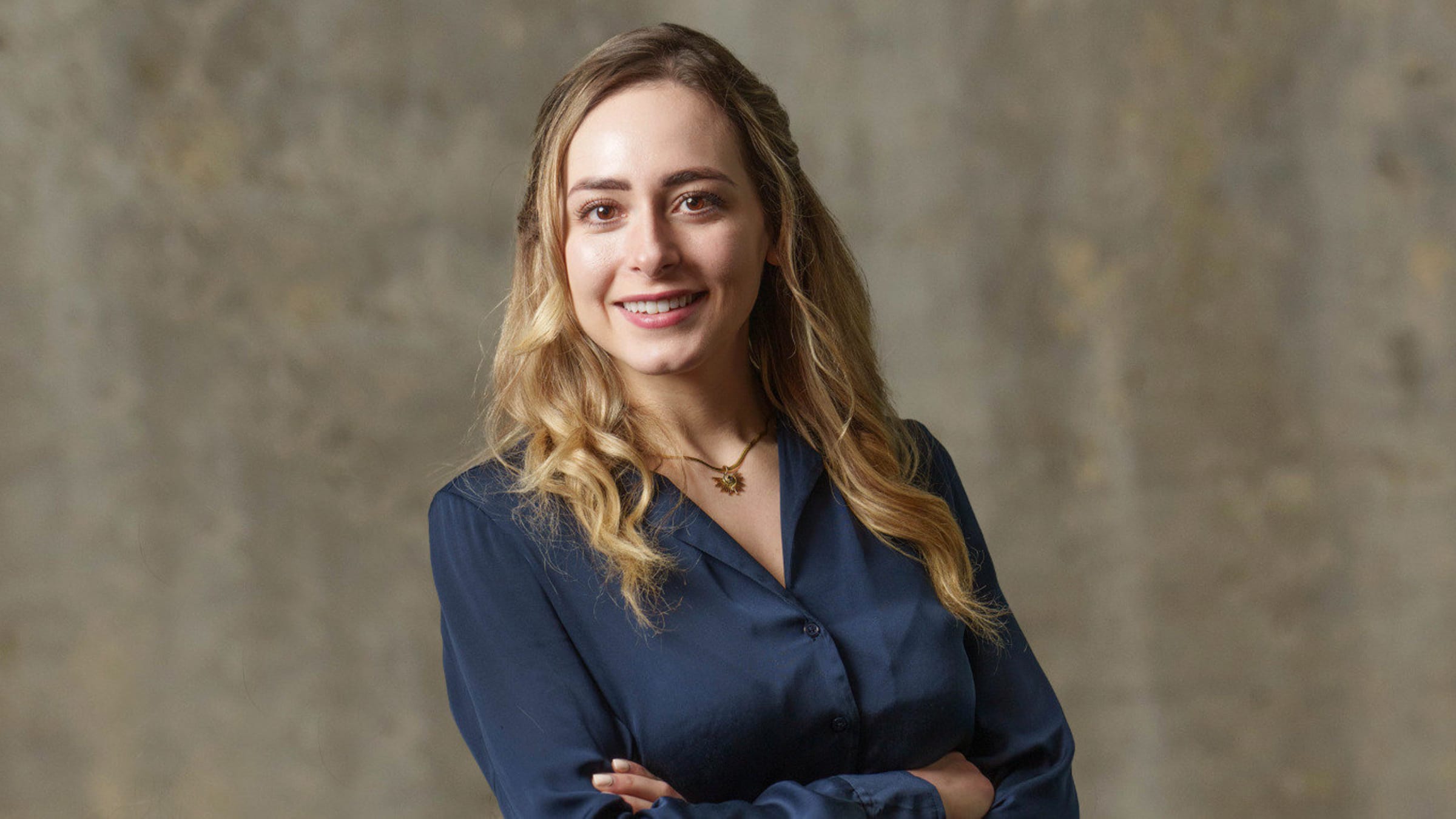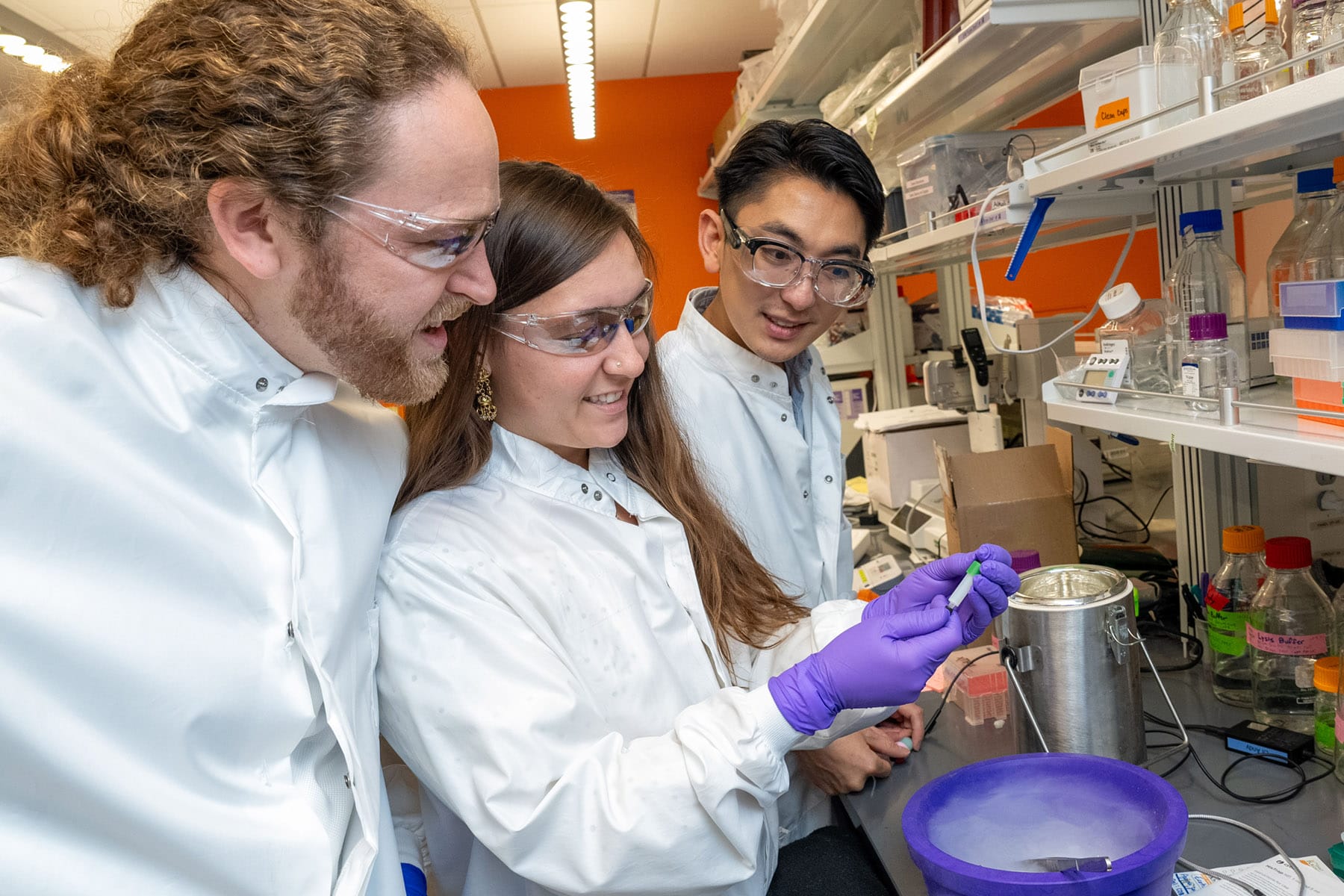The AI Effect: How a Hot Computing Tool Is Tying ‘Bio’ and ‘Tech’ Closer Than Ever
From the story by Ron Leuty in the San Francisco Business Times.
James Fraser had his doubts. After all, decades of scientific rigor say that discovering drugs — proteins, chemicals and the like — is a needle-in-the-haystack process that involves a hypothesis, years of lab work and a smidgen of luck followed by hundreds of millions of dollars.
Even after a Salesforce Inc. skunkworks tapped into the language of proteins to build an artificial intelligence program that generated 100 artificial enzymes for testing, Fraser, who collaborated with the Salesforce team and is a professor at the University of California, San Francisco, thought the batch would produce maybe one that looked like an enzyme found in nature.
Instead, the team’s generative AI program — developed in 2020 using large language models much like the conversational chatbot ChatGPT writes jokes, gives relationship advice or modifies videos — produced more than 50 active proteins. That’s about the same rate of success, Fraser said, found with natural proteins.
“In protein design, until the last couple of years, successes were rare,” said Fraser, a professor of bioengineering and therapeutic sciences in UCSF’s School of Pharmacy. “(AI has) just been a sea change. Stuff works now.”
Those successes are elevating a new generation of AI-focused drug-development companies in the Bay Area, including Profluent Bio, a 20-person Berkeley startup founded by the leaders of the Salesforce project. In the wake created by ChatGPT and a wealth of biological data, those companies may be key to AI’s evolving ability to fix human ills.
AI is wiggling its way into a range of health care tasks, such as drawing faster, more-accurate conclusions from CT scans or more efficiently generating, processing and sharing medical records. But the use of large language models to build algorithms that learn, iterate and perfect their programs to dream up potential drugs is binding biology and technology in ways few imagined when “biotech” emerged nearly five decades ago.
The rise of AI in biotech also comes with common caveats as money flows to AI drug developers with the promise of producing more hits faster and at lower costs. There is a need for guardrails to protect against nefarious or unethical applications, for example, and a fear that hype can opportunistically be recast as hope.
“The hype will play out in the long term,” Fraser said. “The hard part of drug discovery (is) it’s a pretty long business. You can’t take the wet lab part out of it yet. Stuff needs to play out in the clinic.”
Right angle, right tool

Ali Madani is not a biologist or chemist. His specialty as a graduate student at UC Berkeley was machine learning, including time as an intern at IBM and a UCSF researcher applying deep learning for cardiac ultrasounds. He co-founded an electronic health records startup and took a job five years ago as a senior research scientist at Salesforce, the San Francisco customer relationship management software company that brainstormed potential applications for AI.
One of those uses was the ProGen AI program assembled by Madani’s team. With Tierra Biosciences of San Leandro, the team produced a paper in the journal Nature Biotechnology that delineated their success in creating AI-developed proteins.
Finding a protein is one thing. Finding one with the right sequence, shape, functions and ability to fold is quite another. If one of the chemical letters is out of sequence, the creation may look nice structurally but be functionally useless.
“It’s complex and difficult in the space because there are so many options,” Madani said. “We thought, ‘Is there a different way?’ AI was just the right angle, the right tool, the right interpreter.”
Madani left Salesforce in mid-2022 and spoke to more people in the life sciences. “I thought we could build something that addresses their needs,” he said.
Profluent was founded in July 2022, initially capturing $9 million. That included an investment from Jeff Dean, chief scientist at Google’s DeepMind subsidiary that created a groundbreaking protein structure program called AlphaFold. DeepMind’s third version of AlphaFold was released this month to build the structure of proteins, DNA, RNA and more, and predict how nicely all those tools of human life could play together.
“We’re in the era where we’re really focused on how do we match the powerful technology with the real needs that exist,” Madani said.
In March, Profluent disclosed another $35 million round led by Spark Capital, the backer of tech companies like Discord, Grammarly, Coinbase and Anthropic, a public benefit corporation in San Francisco building steerable AI systems. Among other things, the money will help Profluent hire seven people and develop its own wet lab.
Spark last year brought on Fraser Kelton, who was head of product at OpenAI, the San Francisco company that last year moved from research to commercialization in a big way, unleashing the public’s imagination around AI with ChatGPT.
“I joined OpenAI in 2020, when I realized the events of this past year were inevitable,” Kelton said in a March press release announcing Spark Capital’s backing of Profluent. “We’re at the precipice of a similar change in biology. Just as ChatGPT can write compelling essays and emails, Profluent has developed AI that designs entirely new and functional proteins.”
Kelton wasn’t available for an interview for this story, but some in the biotech industry point to his and Spark Capital’s track records as signs that AI-in-biotech companies are attracting deeper investments that signal they are ready for commercial prime time.
“The important point is making sure there’s real substance, real science backing AI,” Madani said. “We’re born out of an AI research lab, not AI sprinkled on top. We start with the science. It’s substantive, it’s peer-reviewed and it’s out there, and the field recognizes it.
‘Far superior’
In all, said a recent paper from a team at Boston Consulting Group, there are 114 “AI-native” biotech companies — those that create a central role for AI in drug discovery techniques and platforms, according to their websites, those that leverage AI for internal drug pipelines or partnerships, and those that use AI for at least one of five things: target discovery, repurposing, small molecule design and optimization, biologics design and optimization, and vaccine design and optimization.
More than a third of those companies have clinical-stage assets, the paper claims.
“We’ve had traditional scientific models for designing new compounds for traditional drug discovery. We’ve been developing those methods for years and the methods got more powerful,” David Baker, a professor of biochemistry whose Institute for Protein Design at the University of Washington has served up the science behind two other Bay Area-connected AI drug companies, Vilya Inc. and Xaira Therapeutics. “But we’ve dramatically improved the protein design methods by switching entirely to AI, and the generative AI methods are now far superior to the methods that were more physically based.”
Profluent itself in April released the world’s first open-source, AI-generated gene editor to help more scientists develop a new generation of medicines tapping another Bay Area-developed biotechnology, CRISPR.
“We’re so excited about this frontier of application of large language models across biological design,” Madani said. “It’s first in CRISPR gene editing and tackling new problems, but it also can be applied to therapeutics and non-therapeutics, like detergents for washing clothes. It’s all proteins.”





